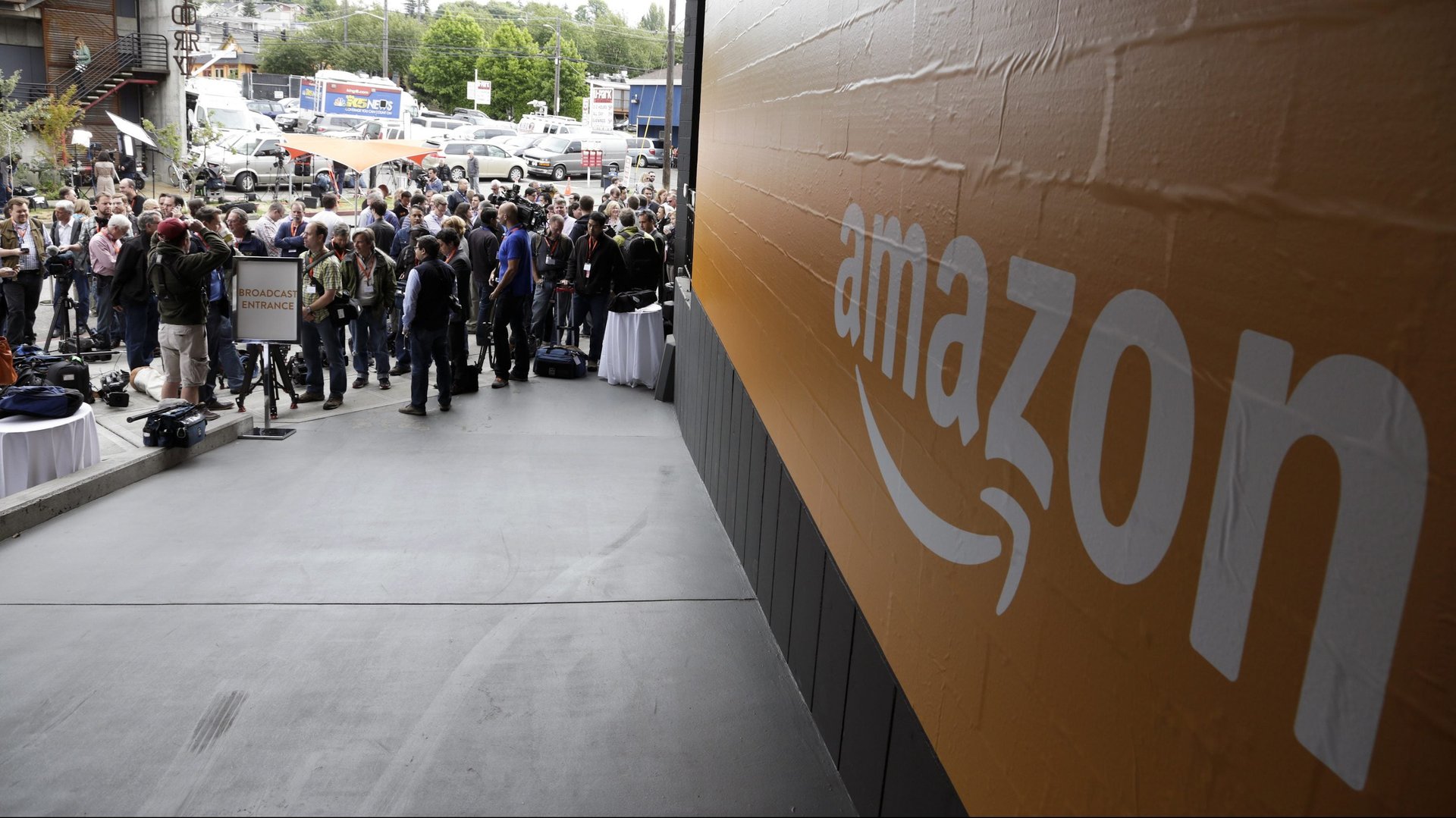Everything Amazon wants for HQ2, the massive new headquarters it’s planning in North America
Amazon is taking bids for the site of HQ2, a second, massive headquarters it is planning in North America. The company intends to invest more than $5 billion in construction and to create up to 50,000 “high-paying jobs” on the new campus, which it says will be “a full equal to our current campus in Seattle.”


Amazon is taking bids for the site of HQ2, a second, massive headquarters it is planning in North America. The company intends to invest more than $5 billion in construction and to create up to 50,000 “high-paying jobs” on the new campus, which it says will be “a full equal to our current campus in Seattle.”
To find the perfect location, Amazon is inviting cities and regional economic development organizations in North America to submit a proposal based on a request for proposal (RFP) document it shared online (pdf). The company is asking for an electronic submission as well as five hard copies marked “confidential” to be mailed to its office of economic development in Seattle by Oct. 19.
Amazon is a notoriously exacting company and the eight-page RFP for its “competitive site selection process” does not disappoint. The e-commerce and logistics giant is obsessed with the transportation options. It’s evaluating prospective metro areas on eight specific criteria:
1. Site/building. Amazon is looking for existing buildings of at least 500,000 square feet and total site space of up to 8 million sq ft. It would like the site to be within 30 miles of a population center and within 45 minutes of an international airport. It prefers metro areas with more than 1 million people. Its Seattle headquarters includes 33 buildings totaling 8.1 million sq ft.
2. Capital and operating costs. Amazon is prioritizing “stable and business-friendly regulations and tax structure” in its considerations. The company is seeking out incentives from state and local governments “to offset initial capital outlay and ongoing operational costs.” At its Seattle headquarters, Amazon says it invested $3.7 billion in buildings and infrastructure from 2010 to 2017, and spent another $1.4 billion on utilities and maintenance.
3. Incentives. The company is asking applicants to outline the specific types of incentives they could offer, such as tax credits and relocation grants, as well calculations on the amount of total incentives that could be provided. “The initial and ongoing cost of doing business are critical decision drivers,” the RFP states.
4. Labor force. Hiring 50,000 skilled workers is no easy task, and Amazon wants to make sure its new headquarters is in an area with a readily available pool of talent. The company is prioritizing sites with a “strong university system.” It’s asked cities to provide a list of universities and community colleges with “relevant degrees” plus the number of students to graduate with those degrees over the past three years. Amazon also wants information on computer-science programs in the local and regional K-12 education system.
5. Logistics. Amazon is first and foremost a master of logistics, so it should come as no surprise that the company cares a lot about transportation. Amazon wants on-site access to mass transit—train, subway, or bus—and to be no more than one or two miles from major highways and connecting roads. It wants to be within 45 minutes of an international airport with daily direct flights to Seattle, New York, the San Francisco Bay area, and Washington DC. The company is also asking applicants to identify “all transit options, including bike lanes and pedestrian access” for the proposed site and to rank traffic congestion during peak commuting hours.
6. Time to operations. To begin construction as soon as possible, Amazon wants an outline of the permitting process and approximate timetable ahead of “Phase 1” of the building process—the first 500,000 to 1 million sq ft, for an investment of $300 million to $600 million.
7. Cultural community fit. Like any tech company, Amazon cares about “culture fit.” It defines this as a diverse population, strong higher-education system, and local government that is “eager and willing to work with the company.” Amazon is asking cities to “demonstrate characteristics of this” in their responses. “We encourage testimonials from other large companies,” it adds.
8. Community/quality of life. The new headquarters should be in a place where people want to live. Amazon is interested in daily living and recreational opportunities for people in each proposed metro area. It is also requesting information about housing prices and availability, general cost of living, and crime statistics.